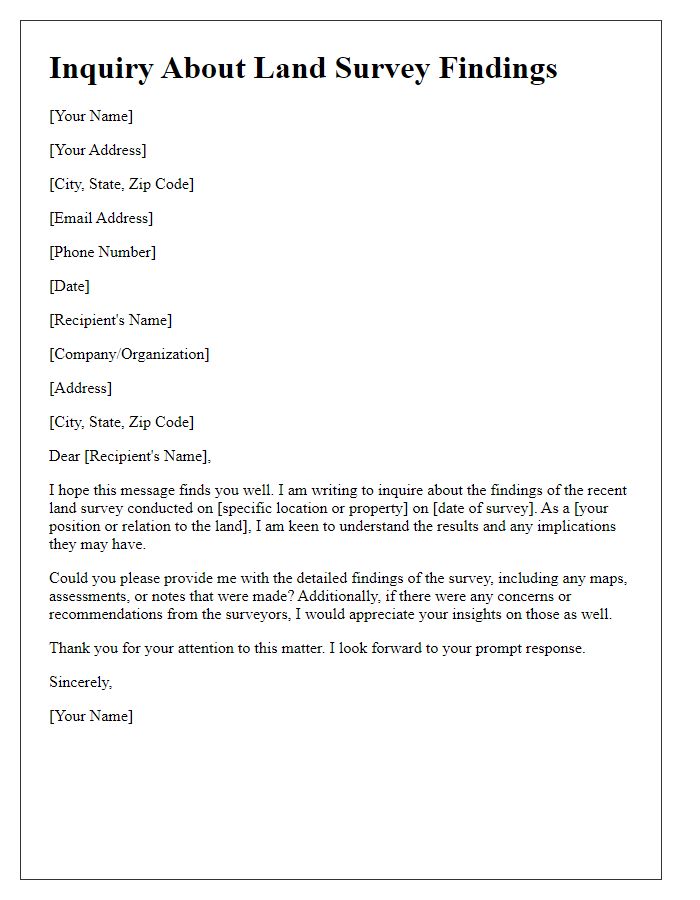Are you looking to request the results of a recent land survey? Writing an effective letter can make all the difference in ensuring your request is processed smoothly. Whether you're a property owner, developer, or simply curious about a plot of land, understanding how to structure your letter is key. Dive into our article to discover a handy template and tips that will make your request clear and professional!

Recipient information (name, address, contact details)
Submitting a request for land survey results requires specific recipient information for effective communication. The recipient's name needs to be clearly mentioned, along with a complete address that includes the street name, city, state, and ZIP code. Contact details are crucial, including a phone number for direct communication and an email address for digital correspondence. This information establishes a formal and professional context for the request, ensuring that it reaches the appropriate party who can provide the pertinent survey documentation, which may include boundary lines, topographical features, and easements in accordance with local regulations and land use plans.
Purpose of the request (specific land details)
A request for land survey results often involves specific details regarding the property in question, such as the survey date, surveyor's name, and parcel number. This request typically aims to clarify property boundaries, identify easements, and understand zoning regulations. For a property located in an urban area, like Los Angeles, California, specifics such as the square footage (for instance, 5,000 square feet) and proximity to landmarks (like Griffith Park) enhance the context. Additionally, including historical data, such as previous land surveys performed in 2010 and 2015, might support the request's purpose. Essential details can significantly enrich the clarity and focus of the request for accurate and timely information.
Attachments (previous survey documents, identification)
A comprehensive request for land survey results should include attachments such as previous survey documents, identification, and any relevant historical property data. This ensures clarity and authority. Previous survey documents provide essential context, detailing past measurements and survey methodologies. Identification, such as a driver's license or passport, verifies the requester's identity and legal grounding for the request. Providing accurate property descriptions (including parcel numbers) helps in pinpointing the specific survey results needed, allowing for a thorough and efficient processing of the request. Location context, including city and county names, may also expedite the inquiry process.
Specific requirements (survey type, deadlines)
Land survey requests necessitate precise specifications such as topographic or boundary survey types. Topographic surveys provide detailed elevation information, typically required for construction projects. Boundary surveys ascertain property lines, crucial for legal ownership disputes. Deadlines are pivotal; requests should specify a completion date, often within 30 to 60 days, to align with project timelines. Essential documents include property deeds, access permissions, and maps, which facilitate accurate survey execution. Additionally, consulting with licensed surveyors enhances compliance with local regulations, ensuring all requirements are met effectively.
Contact information (for follow-up)
A land survey result request may involve essential elements to ensure clarity and direct communication. The sender's contact information typically includes a full name (John Smith), mailing address (123 Maple Avenue, Springfield, IL, 62701), email address (johnsmith@email.com), and phone number (555-123-4567). This information is crucial for follow-up inquiries or additional clarifications regarding the survey, especially if the land in question requires specific legal or geographical details, such as zoning laws or boundary lines. The survey's location, which may include identifiable landmarks or grid coordinates, could also be beneficial for context.













Comments